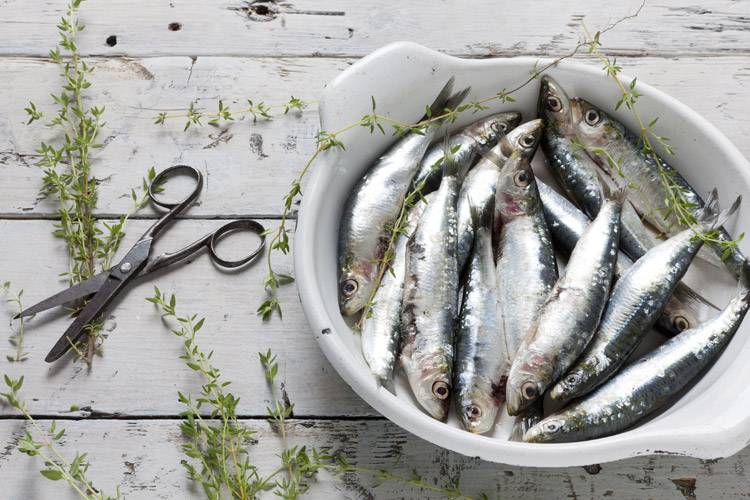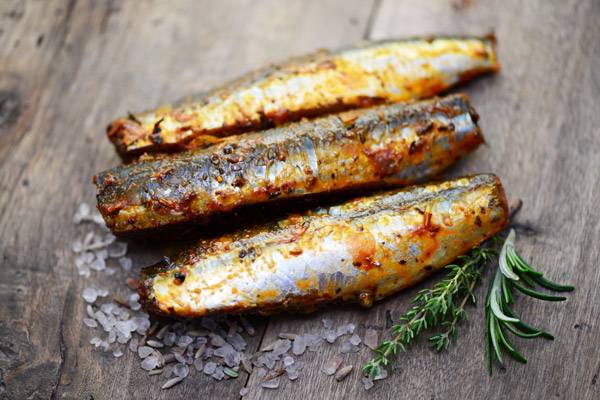Season of sardines, when is it?
Sardines are a type of blue fish which is widely consumed in our country for their multiple properties and affordable price. Their name comes from the coasts of Sardina, the current island of Sardinia, as in Antiquity they were abundant in its waters. They are known as parrocha or parrotxa in Asturias and the País Vasco, sardiña in Galicia or panocha in Andalucía. They are usually sold fresh or tinned.
fresh food
Share

Sardines can live up to ten years, although they reach sexual maturity in the summer at the age of a year. The maximum size is 25 cm, the usual size between 15 and 20 cm at the age of two or three and the minimum size to be caught is 11 cm. They feed off plankton and eggs or fish larvae. Sardines form great shoals of fish which move in unison and which can reach great dimensions. They organise themselves in this way to defend themselves. These shoals always look for warm, high salinity waters.
CONSUMPTION
It is a very perishable fish, and until it started to be preserved in salt or chilled, it was only eaten in coastal towns. In inland towns it was eaten dried and salted or smoked.
Spain is the third European country in terms of fish consumption, with 42 kilos per person and per year, which is double the EU average. Just in front is Portugal with 56 kilos per person and Lithuania with 43 kilos per person.
The sardines we eat are in majority from the Mediterranean, and caught the same day.
SEASON
Although they can be found all year round, the warm seasons are the best fishing season for sardines (from May to October), as this is when surface waters are warmer, plankton is more abundant and sardines overeat, which makes accumulate large quantities of fat, making their flavour and aroma stronger. The ‘sardinadas’ of many Spanish coastal towns are typical, from Galicia and all the Cantabrian area, to the ‘espetadas’ (sardines on a stick) of the Malaga coasts.

NUTRICIONAL PROPERTIES
As for their nutritional value, their content in lipids (oils) varies depending on the season in which they are caught. The content of Omega 3 polyunsaturated fatty acids provided by one portion covers 100% of the daily recommended amount.
Concerning minerals, their content in phosphor is considerable, and as for Omega 3, one portion of sardines covers the daily recommended amount. Their content in selenium, iodine and magnesium is also important.
Among vitamins some of the B group such as B12, B6, and niacin can be found. Sardines also provide fat-soluble vitamins such as vitamin E and D, which encourage the absorption of calcium and its fixation to bones, and regulate calcium levels in the blood.
According to the Spanish Heart Society, “this fish is very beneficial to cardiovascular health because it contains a high level of water, it does not contain starch, sugar or carbohydrates, has 20% good-quality protein, very little saturated fat and above all, Omega-3 fatty acids, which are the heart’s best allies”.
Omega-3 fatty acids play an essential role in the body, as they stabilise the fat metabolism by reducing levels of LDL cholesterol (known as “bad” cholesterol) and increase levels of HDL cholesterol HDL (“good” cholesterol). This is crucial in our cardiovascular health because it helps to reduce cardiovascular diseases.
However, people who suffer from hyperuricemia or gout should not eat sardines, as they are rich in purines which, when metabolised in the organism, are turned into uric acid.
FROM OUR WEBSITE TO YOUR TABLE
They can be used in many recipes, as they can be eaten grilled, fried, in vinaigrette, marinated, etc. The only inconvenient they may have is the strong fishy smell they give off, which can be avoided by wrapping them in foil before baking them.

Market fresh fish
From the sea to the supermarket in under 24 hours
Market fresh fish







